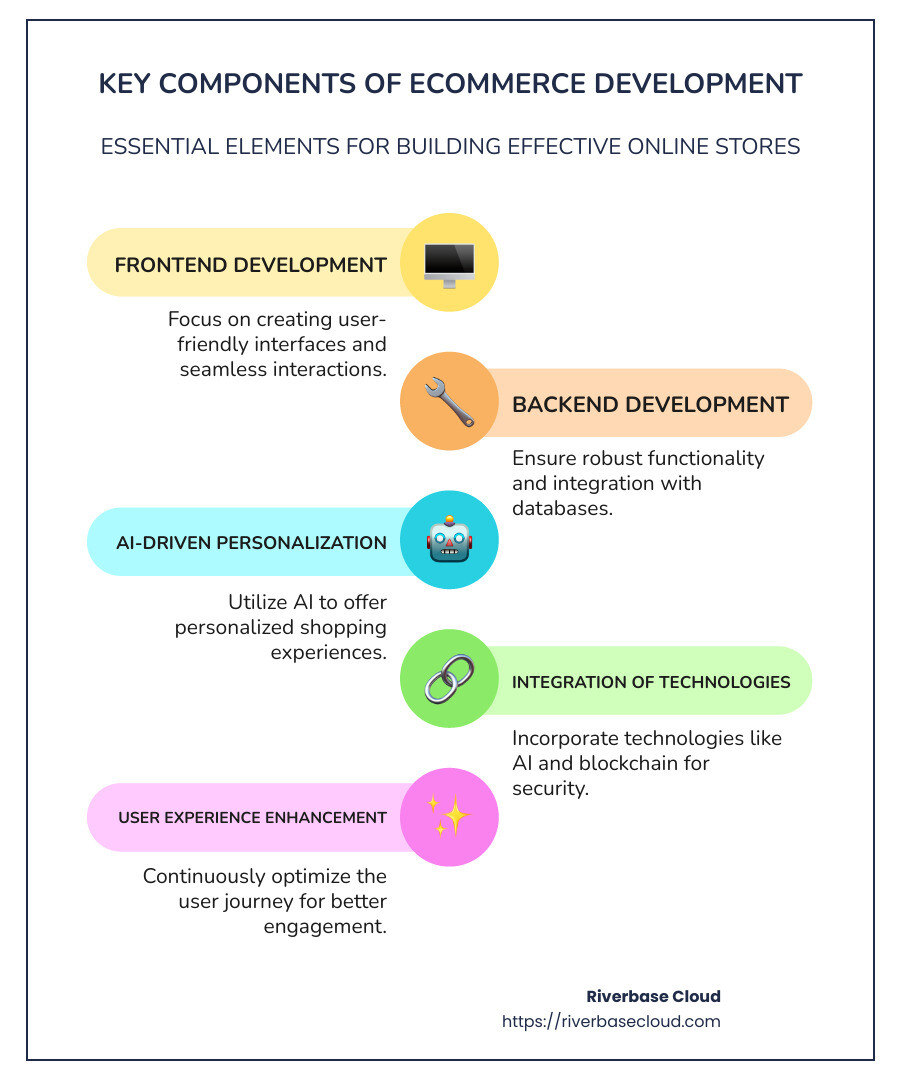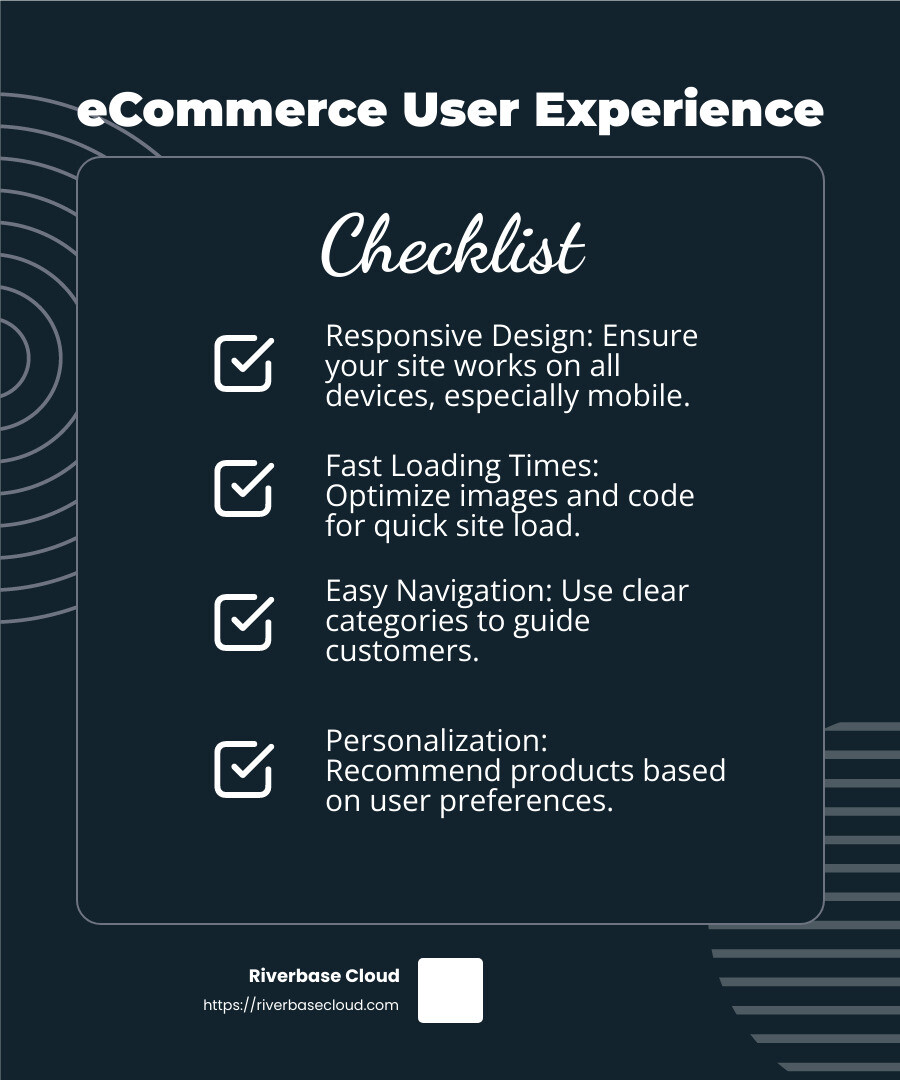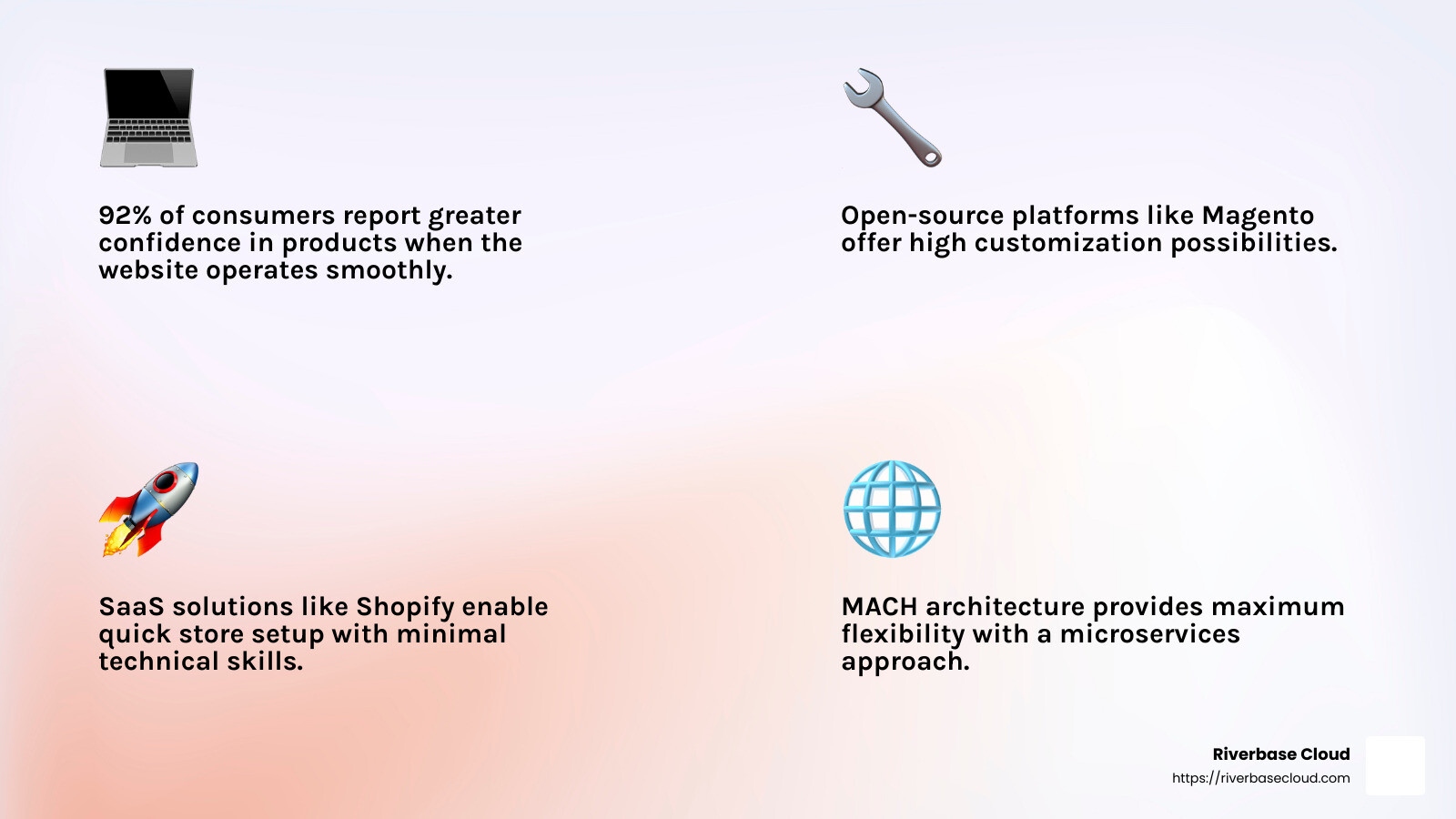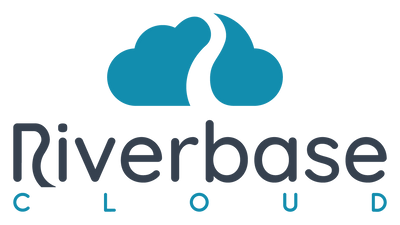eCommerce Development has dramatically transformed how businesses operate and how consumers shop. With the digital shift accelerating in recent years, building efficient online stores is crucial for success. Here's a quick look at what eCommerce Development entails:
- User-friendly online platforms: Ensure seamless shopping from product findy to payment.
- Integration of innovative technologies: Use tools like AI and blockchain for secure and efficient processes.
- Global reach: Tailor strategies for both local and international sales opportunities.
The rise of mobile-first shopping and social commerce has set a new standard for the industry. Businesses are now exploring these innovations to improve user experience and boost sales. The future of online shopping is all about agility, technological advancement, and customer focus.
As Gary Gilkison, I bring experience in eCommerce Development and strategy optimization. Throughout my career, I've helped businesses grow their online presence using cutting-edge digital marketing techniques and AI-driven solutions. Next, we will dive deeper into understanding the core of eCommerce development.

Simple eCommerce Development glossary:
- ecommerce marketing and development services
- ecommerce website development cost
- ecommerce website development online
Understanding eCommerce Development
eCommerce Development is the backbone of online shopping. It involves creating a digital platform where businesses can sell goods and services. Let's break down the key components:
eCommerce Web Development
Building an eCommerce website is more than just putting products online. It's about creating a seamless experience that guides users from browsing to buying. This involves several technical elements:
Frontend Development: This is what users see and interact with. A well-designed frontend is intuitive and visually appealing. It makes it easy for customers to find products, understand details, and make purchases. Think of it as the store window that attracts and engages shoppers.
Backend Development: This is the engine behind the scenes. It handles data management, inventory, and transactions. Platforms like Magento or WooCommerce often power these systems. A robust backend ensures everything runs smoothly, from product updates to order processing.
Technical Structure
The technical structure of an eCommerce site is crucial for performance. It involves:
Scalability: As your business grows, your website should handle more traffic and transactions without slowing down.
Security: Protecting customer data is vital. Implementing secure payment gateways and encryption methods is a must.
Integration: eCommerce sites often need to connect with other tools like CRM systems, analytics, and marketing platforms. This integration helps streamline operations and improve customer service.
User Experience
A positive user experience (UX) is essential for converting visitors into buyers. Here's what to focus on:
Responsive Design: Ensure your site works well on all devices, especially mobile. More people shop on their phones than ever before.
Fast Loading Times: A slow site can drive customers away. Optimizing images and code helps keep load times short.
Easy Navigation: Customers should find what they need quickly. Use clear categories and search functions to guide them.
Personalization: Tailoring the shopping experience to individual preferences can boost engagement and sales. AI-driven personalization tools can recommend products based on browsing history and preferences.

eCommerce Development is about merging technology with user needs to create a platform that not only functions well but also delights customers. Exploring the various options for building an eCommerce website will help you choose the perfect solution for your business goals.
Key Components of eCommerce Development
When it comes to eCommerce Development, understanding the key components is crucial. These elements ensure your online store not only functions well but also delivers a superior shopping experience. Let's explore the details:
Frontend Development
Frontend development is all about what your customers see. It's the part of your website that users interact with directly. A great frontend is not just about aesthetics; it's about creating an intuitive and engaging user interface.
Design and Layout: The visual appeal of your site matters. Use appealing colors, clear fonts, and high-quality images to create an inviting atmosphere.
User Interface (UI): Make sure your site is easy to steer. Clear menus, a search bar, and well-organized product categories help users find what they need quickly.
Responsive Design: With the rise of mobile shopping, your site must look and work well on all devices. A responsive design adjusts to different screen sizes, ensuring a smooth experience for everyone.
Backend Development
The backend is the powerhouse of your eCommerce site. It's where data is processed, orders are managed, and transactions are handled.
Data Management: Keep your product information, customer data, and inventory organized and up-to-date. This ensures that everything runs smoothly behind the scenes.
Order Processing: A reliable backend automates tasks like sending order confirmations and updating stock levels, reducing the risk of human error.
Security: Protecting customer data is non-negotiable. Implement secure payment gateways and use encryption to safeguard sensitive information.
Integrations
Integrations are about connecting your eCommerce platform with other tools and systems. This can improve functionality and streamline operations.
Payment Gateways: Integrate with popular payment systems like PayPal or Stripe to offer customers multiple payment options.
Shipping Providers: Connect with shipping services to automate delivery tracking and notifications.
Analytics Tools: Use integrations with platforms like Google Analytics to gain insights into customer behavior and optimize your site accordingly.
AI-Driven Personalization
Personalization is the secret sauce that can make your eCommerce site stand out. By using AI, you can tailor the shopping experience to individual customers.
Product Recommendations: AI can analyze browsing history and suggest products that customers are likely to buy, increasing the chances of a sale.
Dynamic Content: Show personalized offers or discounts based on user behavior, making the shopping experience more relevant and engaging.
Chatbots: Implement AI-powered chatbots to provide instant customer support, answering questions and guiding users through the buying process.
Understanding these key components of eCommerce Development is essential for building a successful online store. Whether you're focusing on frontend design, backend operations, or personalized experiences, each element plays a vital role in creating a seamless and enjoyable shopping experience for your customers.
Next, we'll explore the various options for building an eCommerce website, helping you find the right solution to meet your business needs.
Options for Building an eCommerce Website
When diving into eCommerce Development, choosing the right platform is like selecting the foundation for your business. Let's explore three main options: open-source platforms, SaaS solutions, and MACH architecture.
Open-Source Platforms
Open-source platforms give you the freedom to tweak every nook and cranny of your online store. If you've got a tech-savvy team, this might be your golden ticket.
Flexibility and Control: Platforms like Magento and WooCommerce let you modify the code to fit your exact needs. This means you can create a truly unique shopping experience.
Cost Considerations: While these platforms can be free to install, remember you're on the hook for hosting, security, and maintenance. This can add up, especially if you need to hire developers.
Use Case: Large businesses with specific needs and dedicated tech teams often thrive here. They can handle the complexities and reap the benefits of customization.
SaaS Solutions
SaaS (Software-as-a-Service) platforms are like renting a fully-furnished apartment. They take care of the heavy lifting, so you can focus on your business.
Ease of Use: Platforms like Shopify and BigCommerce offer a user-friendly interface and handle hosting, security, and updates for you.
Quick Setup: Get your store up and running fast without needing deep technical skills. This is perfect for small to medium-sized businesses.
Scalability: Want to add features as you grow? No problem. These platforms are built to scale with your business needs.

MACH Architecture
MACH stands for Microservices, API-first, Cloud-native, and Headless. This modern approach offers maximum flexibility and scalability.
Microservices: Small, independent services that work together. This means you can update or change parts of your site without affecting the whole system.
API-First: APIs allow different software to communicate. This means you can easily integrate new features or services.
Cloud-Native: Leverage the cloud for better performance and reliability. You pay for what you use, which can be cost-effective.
Headless Commerce: Decouple the frontend from the backend. This allows for greater design flexibility and faster implementation of new technologies.
Each of these options offers unique benefits and challenges. Your choice will depend on your business size, technical expertise, and growth plans. Whether you want full control with open-source, the ease of SaaS, or the cutting-edge flexibility of MACH, there's a solution out there to fit your needs.
Next, we'll break down the 6-Step eCommerce Development Process, guiding you through planning, platform selection, and more.
The 6-Step eCommerce Development Process
Creating an eCommerce website involves a series of methodical steps. Let's explore the 6-Step eCommerce Development Process to ensure your online store is built for success.
1. Planning
Before you write a single line of code, start with a solid plan. Define your business goals, target audience, and key features of your site. Do you aim to increase sales, boost brand recognition, or both? Understanding these goals will steer your project in the right direction.
Customer Service Goals: Determine how you want to serve your customers online. This might include live chat support, easy returns, or personalized shopping experiences.
Product Display and Sales: Decide how to showcase your products. High-quality images, detailed descriptions, and user reviews can improve user experience and drive sales.
2. Platform Selection
Choosing the right platform is crucial. Consider factors like scalability, customization options, and ease of use. Popular choices include Shopify for ease and speed, Magento for customization, and WooCommerce for WordPress integration.
Scalability: Ensure the platform can grow with your business. If you plan to expand internationally, check for multi-language and currency support.
Cost: Balance your budget with the features you need. Some platforms charge monthly fees, while others might require upfront investments for hosting and development.
3. Layout Design
Design your website's layout with user experience in mind. Create a sitemap outlining all the pages your site will have, such as product listings, checkout, and customer reviews.
User-Friendly Navigation: Ensure customers can find what they need with minimal clicks. Think about intuitive menus and search bars.
Visual Appeal: Use colors and themes that reflect your brand. High-quality images and videos can make your site more engaging.
4. Coding
This is where the rubber meets the road. Whether you’re using a content management system (CMS) or coding from scratch, ensure your site’s backend is robust and secure.
Manual Coding vs. CMS: If you prefer not to code manually, platforms like Shopify and WordPress offer CMS solutions that simplify the process.
Security: Implement SSL certificates and other security measures to protect customer data.
5. Design Optimization
Optimize your design to improve the user experience. Ensure your site is responsive and loads quickly on all devices. This is often the first interaction customers have with your brand, so make it count.
Responsive Design: With 65% of eCommerce traffic coming from mobile devices, ensure your site looks great on smartphones and tablets.
SEO Optimization: Optimize for search engines with fast load times, clean URLs, and strategic use of keywords.
6. Launch
Before launching, test every aspect of your site. Check that all functionalities, especially the checkout process, work flawlessly. Once everything is in place, it's time to go live.
Testing: Use tools like Google’s PageSpeed Insights to check site performance. Test on different browsers and devices to ensure compatibility.
Marketing Strategy: Plan a marketing campaign to promote your new site. Use SEO, social media, and email marketing to drive traffic.
By following these steps, you can build a user-friendly and secure eCommerce platform that meets your audience's needs and supports your business growth.
Now, let's move on to some Frequently Asked Questions about eCommerce Development.
Frequently Asked Questions about eCommerce Development
What does an eCommerce developer do?
An eCommerce developer is like the architect of an online store. They handle both the technical and creative sides of building a website where you can sell products.
Technical Aspects: They focus on the nuts and bolts of the site, like coding, server management, and database setup. This ensures everything runs smoothly behind the scenes.
Performance and Scalability: Developers make sure your site can handle lots of visitors without crashing. They plan for growth so your site can expand as your business does.
Security: Keeping customer data safe is a top priority. Developers add security features like SSL certificates to protect against hackers and ensure safe transactions.
How much does eCommerce development cost?
The cost of eCommerce development can vary a lot. It depends on what you need and how big your business is.
Solopreneurs: If you're just starting out, you might use a simple platform that offers easy setup and management, making it perfect for small businesses.
Enterprise-Level: Larger companies might need custom-built sites with advanced features. This can cost thousands of dollars, but it offers more flexibility and customization.
Cost Range: Generally, a basic site might cost a few hundred dollars, while a complex one with custom features can go into the tens of thousands.
What are the types of eCommerce websites?
There are different types of eCommerce websites, each serving a unique purpose.
Vendor-Specific: This is a site owned by a single seller. Think of a brand that sells directly to customers through its website. It's straightforward and focuses on the brand's products.
Multi-Vendor Marketplaces: These are platforms where many sellers list their products. It's like an online mall with lots of shops under one roof.
B2B and B2C: Business-to-Business (B2B) sites sell products to other businesses, often in bulk. Business-to-Consumer (B2C) sites sell directly to individual customers.
Understanding these types helps you decide which is best for your business model.
Conclusion
In the world of eCommerce Development, finding the right solutions can make or break your online business. At Riverbase Cloud, we specialize in empowering small and medium-sized businesses with AI-driven marketing. Our Managed-AI solutions combine cutting-edge automation with expert oversight to ensure your marketing efforts are as seamless and stress-free as possible.
Our approach is simple but powerful. We use Managed-AI ADS to optimize ad campaigns across platforms like Google, Bing, YouTube, and LinkedIn. This means you get the best results with minimal effort. Our Managed-AI CONTENT focuses on creating high-quality, search-optimized content that helps your website rank higher and attract more visitors. And with Managed-AI LOCAL, we improve your local search presence and reputation, making it easier for customers in your area to find you.
What sets us apart is the blend of AI efficiency and human expertise. While AI accelerates growth, the human touch ensures success. Our strategies are flexible, transparent, and commitment-free, allowing you to cancel anytime without hassle.
In the evolving landscape of eCommerce, having a strong digital marketing strategy is essential. Riverbase Cloud is here to help you steer this journey. Our AI-driven solutions are designed to align with your business goals, ensuring your digital storefront is not just seen but chosen.
Ready to lift your eCommerce game? Explore our services and find how we can help you achieve remarkable results. Together, we can ensure your online business thrives in the competitive digital marketplace.

